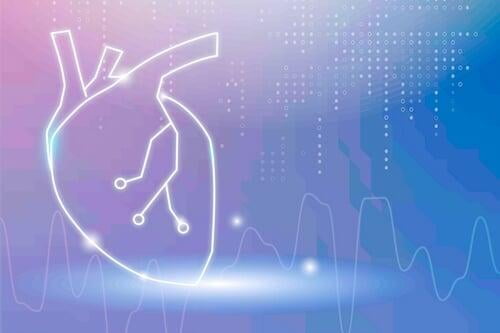The battle of doctors and researchers to take care of the heart does not cease. The different areas that are dedicated to taking care of this organ attack the diseases that affect it from different sides.
This has resulted in new therapies that significantly improve the results of traditional procedures or that provide new perspectives of treatment. This month, World Heart Day is commemorated, that´s why we want to dedicate this blog to highlight some of the novel techniques, devices and software that are improving the lives of patients suffering from cardiovascular diseases.
TAVR for patients with aortic stenosis
TAVR for patients with aortic stenosis
Traditional aortic stenosis treatment involves open-heart surgery to replace the narrowing aortic valve. This has several disadvantages as not all patients are candidates for this procedure and recovery takes several months.
The new treatment called TAVR (Transcatheter Aortic Valve Replacement) is less invasive. Which makes it a good choice for almost all patients, including those who were too weak to withstand major surgery. During TAVR, the surgeon inserts a catheter into the femoral artery, through the groin, or he can go through the chest, to place the artificial valve. This significantly reduces the complications of major surgery.
Watchman implant for patients with Afib
Watchman implant for patients with Afib
Atrial fibrillation is usually treated with ablation and blood thinners to prevent ischemia or even stroke. However, not all patients can take such medications because they are at risk of bleeding or because they are susceptible to side effects.
Watchman (also known as Watchman Left Atrial Appendage Closure Device) is a more viable option for most patients. It is a small device parachute like, that is implanted in the heart through a catheter while the patient is under general anesthesia. The device closes the left atrial appendage (LAA) of the heart (where clots most often form) to prevent them from forming.
HeartFLow FFRct Analysis for Coronary Artery Disease
HeartFLow FFRct Analysis for Coronary Artery Disease
This tool helps diagnose coronary artery disease (CAD) since it allows physicians have a better view of the patient's arteries. It is a non-invasive technique that is often used along a CT scan to create a 3D image of the arteries. This software clearly shows the blockages and narrowings that may occur in the coronary arteries.
The information obtained through the HeartFLow Analysis Analysis FFRctmakes it easier for the specialist to prepare the most appropriate treatment for each patient, whether it is the use of a stent, surgery or suggestions for healthy changes in their lifestyle.
MitraClip for patients with mitral regurgitation
MitraClip for patients with mitral regurgitation
Mitral regurgitation is life-threatening if left untreated, as the defective closure results in a leak (or regurgitation) from the left ventricle to the left atrium. This causes the patient to experience shortness of breath, fatigue, and heart failure; besides, it increases his risk of stroke and heart attack.
MitraClip is used to correct mitral regurgitation. It is a minimally invasive procedure that places the device in the mitral valve to help it close better, through a catheter that enters through a vein in the legs.
ECMO for patients with severe cardiopulmonary failure
ECMO for patients with severe cardiopulmonary failure
ECMO stands for Extracorporeal Membrane Oxygenation. It is a device that allows to maintain the flow of oxygenated blood in patients who have suffered severe cardiopulmonary failure, due to life-threatening diseases.
ECMO pumps the blood into a container where it passes through multiple membranes that remove carbon dioxide and add oxygen, and then, the oxygenated blood is pumped back to the patient's body. This allows their heart and lungs to rest and keeps them alive while they wait for a transplant. But it's also a useful option for patients who suffered a massive heart attack, a severe cardiopulmonary disease, or with lung damage due to infections, among other problems.
At SCHILLER we believe that technology can greatly improve people's lives. That is why we develop cardiopulmonary devices that help detect and diagnose diseases before their evolution leads patients to need therapeutic procedures such as those mentioned in this article.
And yet, it is reassuring to know that we belong to the group of scientists, specialists and medical equipment developers who take advantage of technological advances to take care of the heart of people and save their save lives.That has always been our mission.



